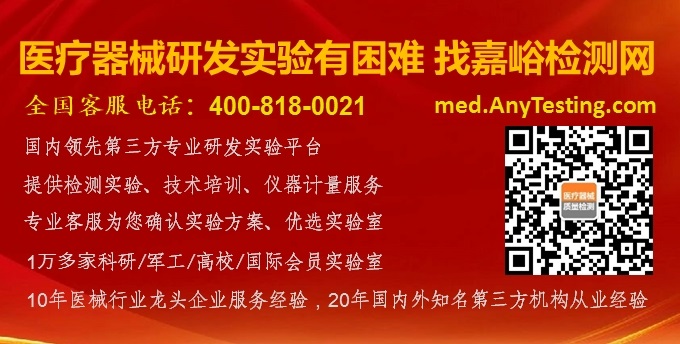MDCG 2020-16 rev.2
Guidance on Classification Rules for in vitro Diagnostic Medical Devices under Regulation (EU) 2017/746
February 2023
更新属于轻微修订,主要涉及到规则1(Rule 1)的示例、新增伴随诊断(Companion Diagnostics)CDx分类依据和分类路径等。
1. Rule 1 示例
修改前:Highly virulent pandemic influenza virus.
修改后:Highly virulent influenza virus.
删除“流行性”,将非流行性、高致病性流感病毒也归类为D类产品。
2. 适用于规则31(Rule3)一般性意见修订
修改前:Rule 3 covers a range of devices as reflected in its indents (a)-(m). Devices falling under Rule 3 (when not classified as Class D according to rules 1 & 2) are to be classified in class C,irrespective of the indent applied.
It may be possible for a device to fall under more than one Rule 3 indent.Where this is the case, the most appropriate indent should always be applied, based on the intended purpose of the device.修改后:Rule 3 covers a range of devices as reflected in its indents (a)-(m). Devices falling under Rule 3 (when not classified as Class D according to rules 1 & 2) are to be classified in class C,irrespective of the indent applied.It may be possible for a device to fall under more than one Rule 3 indent.
删除“在此情况下,应始终根据器械的预期用途应用最合适的词条”,要求器械预期用途应更清晰、描述准确。
3. 适用于规则3(f)(Rule3(f))的内容修订修改前:The identification of patients may comprise a quantitative or qualitative determination of specific markers.Such specific markers can be present in healthy subjects and/or in patients.
The emphasis ‘before and/or during treatment’ implies that CDxs may be intended to be applied before a treatment with a corresponding medicinal product is initiated, or during treatment, to identify if (still) the patient is (a) likely to benefit from the corresponding medicinal product or (b) likely to be at increased risk of serious adverse reactions.
Devices that are intended to be used for monitoring treatment with a medicinal product in order to ensure that the concentration of relevant substances in the human body is within the therapeutic window are not considered to be CDxs.
修改后:For a device to be defined as a CDx, there should be a link to a medicinal product with an International Non-proprietary Name (INN) .
The identification of patients may comprise a quantitative or qualitative determination of specific markers.
Such specific markers can be present in healthy subjects and/or in patients.
The emphasis ‘before and/or during treatment’ implies that CDxs may be intended to be applied before a treatment with a corresponding medicinal product is initiated, or during treatment, to identify if (still) the patient is(a)likely to benefit from the corresponding medicinal product or (b)likely to be at increased risk of serious adverse reactions.
Devices that are intended to be used for monitoring treatment with a medicinal product in order to ensure that the concentration of relevant substances in the human body is within the therapeutic window are not considered to be CDxs (e.g. devices intended for blood glucose monitoring, devices intended for measurement of cyclosporine concentration in blood, devices intended for measurement of metabolites of a medicinal product).
Devices intended to determine quantitative or qualitative specific marker(s) to establish the dosage of a particular medicinal product, for patients that are already eligible to receive that medicinal product, are not considered to be CDxs. For example, devices intended to measure creatinine concentration can be used for estimating kidney function to determine the optimal dosage of medicinal products with renal elimination. Another example is devices identifying CYP2D6 or CYP2C19 genotypes of a patient to determine the appropriate dosage of an already prescribed medication.
Annex II to this guidance provides a flowchart to help determine whether an IVD is a CDx.
新增:
1) 对于定义为CDx的器械,应链接到具有国际非专利名称(INN)的药品。
2) 用于确定特定药物剂量的定量或定性特定标志物的器械,对于已具备资格接受该药物的患者,不被视为CDxs。
例如:旨在测量肌酐浓度的器械可用于估计肾功能,以确定具有肾消除功能的药物的最佳剂量;识别患者CYP2D6或CYP2C19基因型,以确定处方药物适当剂量的器械。
3) 附录II提供流程图,帮助确定IVD是否为CDx。
强调:伴随诊断器械的分类依据和分类路径。
伴随诊断为医疗器械,属于体外诊断范畴,能够对相应药物或生物制品的安全性、使用效果等重要信息进行评价。
Q1:对于安全有效地使用具有INN的医疗产品,IVD是否至关重要?
Q2: IVD是否监测药物浓度处于治疗窗口期?
Q3:IVD是否确定已有资格接受该药物的患者的药物剂量?
Q4:IVD是否在治疗前或治疗期间确定患者:最大可能受益于该药物,或使用该药物治疗后发生严重不良事件的风险是否会增加?
Q1不适用的情况下,器械为非伴随诊断器械。
如适用Q1,则继续考虑Q2适用情况
→ 如适用Q1+Q2,器械为非伴随诊断器械。
→如适用Q1但不适用Q2,继续考虑Q3适用情况:
1. 如适用Q3情况,器械为非伴随诊断器械;
2. 如不适用Q3情况,应继续考虑Q4情况:
2.1 如适用Q1,不适用Q2和Q3,但适用Q4,器械为伴随诊断器械;
2.2 如适用Q1,不适用Q2、Q3、Q4情况,器械为非伴随诊断器械。




